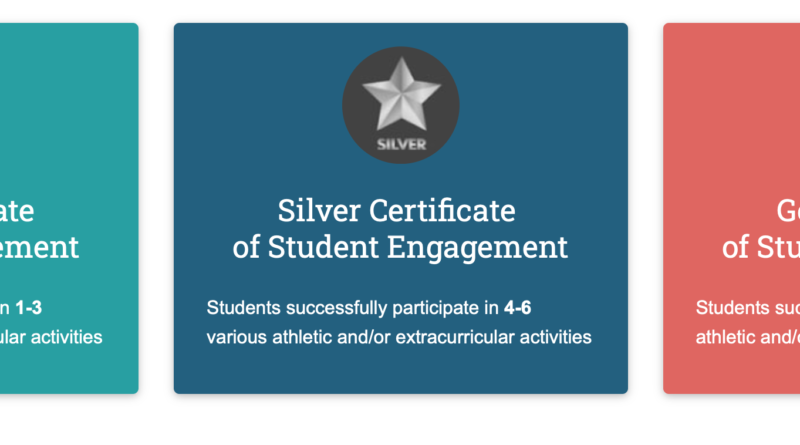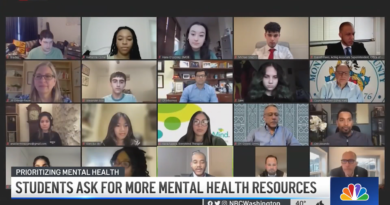Why MCPS’ New Certificate of Student Engagement is Problematic
Five academic clubs, one honor society, two service organizations outside of school, and a dance team. That was my extracurricular workload sophomore year. On top of my commitments outside of school, I had the workload that came with taking two AP classes and four honors classes.
I was making myself physically sick with work, staying up into the wee hours of the night to accomplish all my tasks. At the end of the year, as AP exam season began and dates for my myriad project deadlines, dance performances and club events were converging, I had a mental breakdown and contemplated serious self harm.
Despite all the work I accomplished that year, despite all I was committed to, according to MCPS’ new Certificate of Student Engagement guidelines, I would have technically only been performing at the “Silver” level.
Don’t you see a problem with that? MCPS’ new guidelines say that students who participate in one to three school-recognized athletic or non-athletic extracurricular activities are operating at a “Bronze” level. Students participating in four to six of those activities earn “Silver” recognition. Those who participate in seven or more school-sanctioned activities earn “Gold” status.
High-achieving students, and students whose parents pressure them to attain the highest possible level of recognition for these sorts of things, are going to run themselves ragged trying to reach what they will come to see as coveted “Gold” status. The kids who are trying to obtain that Gold Certificate of Student Engagement are also likely to be the students enrolled in multiple AP, IB, and/or honors courses. Their insane extracurricular activity workload combined with their rigorous coursework is a recipe for mental health issues and, quite frankly, burnout. Been there, done that.
For a school system who has implemented a whole supplemental curriculum designed to encourage positive mental and emotional health, BeWell365, MCPS sure does not seem to understand how these ridiculous and arbitrary parameters for success will negatively impact a student’s holistic wellbeing. Their guidelines really are the epitome of hypocrisy.
Besides the mental and emotional strife that comes with balancing a hefty extracurricular workload with a rigorous course load, making it seem like students must participate in seven or more activities to be as successful as possible will prove detrimental to students’ physical wellbeing. If we are already glued to our screens for four or more hours a day for virtual instruction and homework, why should students be encouraged to spend hours more in front of their computers?
Suppose each club met for an hour once a week, and suppose a student signed up for seven non-athletic activities to get that Gold certificate. That would be four hours of instruction four days a week (4×4 = 16) plus seven additional hours of club work. 16 + 7 = 23. That’s 23 hours of screen time over the course of five or six days depending on whether some of their clubs meet Saturdays. If that student were to add athletic activities to their schedule, that could be multiple additional hours in front of a computer screen per week as MCPS implements their virtual sports schedule. Even if the student were to be performing some sort of physical activity during those virtual sports meetings, or if they are expected to complete exercises outside of their virtual meetings, that is more time being consumed by an extracurricular activity.
Psychologists Mike Brooks and Randy Kulman write in the magazine Psychology Today that one to two hours of recreational screen time a day is about the right limit for teenagers, which tracks with extracurricular activities’ schedules. However, their articles were written before the coronavirus pandemic, and do not take into account how much time we are forced to spend looking at screens now.
While participating in extracurricular activities is not exactly watching Netflix or scrolling through Instagram for an hour, that is still more screen time, which means less time practicing real mindfulness activities or other healthy habits like reading for pleasure. Therefore, these standards for a Gold Certificate of Student Engagement are physically harmful as well.
For so many reasons, these arbitrary guidelines for these new certificates of student engagement are incredibly harmful to students. What I went through in my sophomore year was horrible, and I never want any student to have to experience that, especially in the midst of a pandemic that has made so many people more susceptible to mental health issues. MCPS should have thought twice before encouraging students to overcommit themselves and run themselves ragged to get this new award.
If MCPS wants to incentivize students to remain engaged in the school community during virtual instruction, maybe just have one overarching Certificate of Student Engagement for participating in just a couple of extracurricular activities. Students can do wonderful things if they are completely committed to just a few extracurricular activities instead of stretching themselves thin and severely jeopardizing their health.




